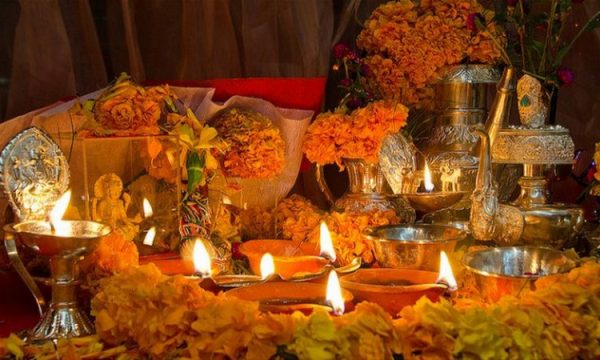In Sudurpaschim, the month of Shrawan is celebrated as the month of lighting lamps, also known locally as the ‘Black Month.’ Jayānand Bhatt, a local expert, explains that from the onset of Shrawan Sankranti, it is customary to perform rituals and worship in the temples.
The belief that deities rest in Baikuntha during this month leads to it being called the ‘Black Month.’ Bhatt elaborates, “Since the surroundings turn green during Saun, it is believed that the deities rest, and from Harishayani Ekadashi to the end of Saun, the gods stay in Vaikuntha.”
During this period, lighting lamps are believed to provide protection and prevent adversaries from approaching. From today, devotees wake up early, bathe, and observe fasts, visiting temples to offer prayers. It is a religious belief that this practice not only fulfills one’s desires but also absolves sins committed unknowingly.
In Baitadi, the presence of the Seven Sisters Bhagwati and the Seven Brothers Kedar temples attracts not only Nepali but also Indian pilgrims from across the border, according to Dipendra Bohara from Dasharathchand Municipality-2.
Throughout the month of Shrawan, pilgrims visit several notable temples, including Raulake Kedar in Surnaya Rural Municipality, Gwallek Kedar, Jagannath, Ishwari Gangadham in Dasharathchand Municipality, Sigās Temple in Sigās Rural Municipality, Shivnath Temple in Shivanath, Dogdādhām in Dogadakedar, and Deulek Kedar and Bhitak Kedar temples.
It is also customary to stay awake at night and light lamps. People living outside the district often return to partake in the rituals during this month.
Hyalō Tradition:
Today, the tradition of planting green vegetation like asparagus and melā in the fields is observed to protect crops from diseases and pests and to enhance production. Planting these greens along the edges of fields, known as ‘hyalō,’ is a practice intended to safeguard the crops, particularly when the deities are believed to be resting, according to cultural expert Jayānand Bhatt.
On Shrawan Sankranti, it is also customary to apply tika to Brahmins and daughters, giving them gifts and donations. Additionally, rice pudding (kheer) is prepared and shared, and daughters are given delicious food items.
After a month of working in muddy fields during Asar, the body might suffer from itchiness, boils, and other skin issues. To cleanse the body and ward off these ailments, a tradition of ‘luto fālnu’ is observed. In the evening, villagers burn asparagus and bitter leaves in the hearth, taking a burning stick and waving it in all four directions while chanting ‘luto laijau,’ symbolically casting away the afflictions. Any remaining boils or sores are then treated with a salve made from burning dogwood.
This mix of religious belief, agricultural practice, and traditional medicine marks the distinct cultural observance of Saun in Sudurpaschim, demonstrating the region’s rich heritage and community spirit.






